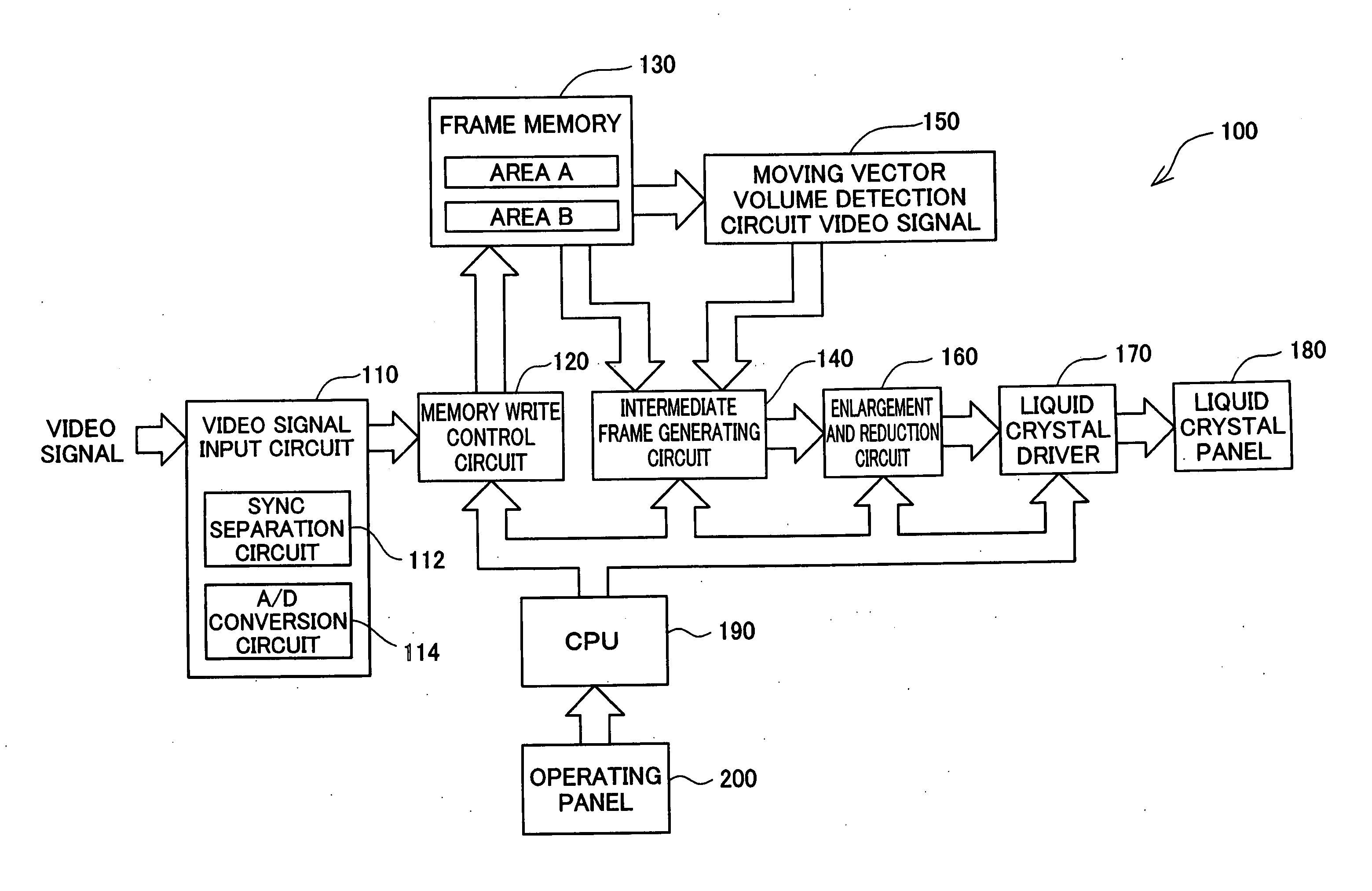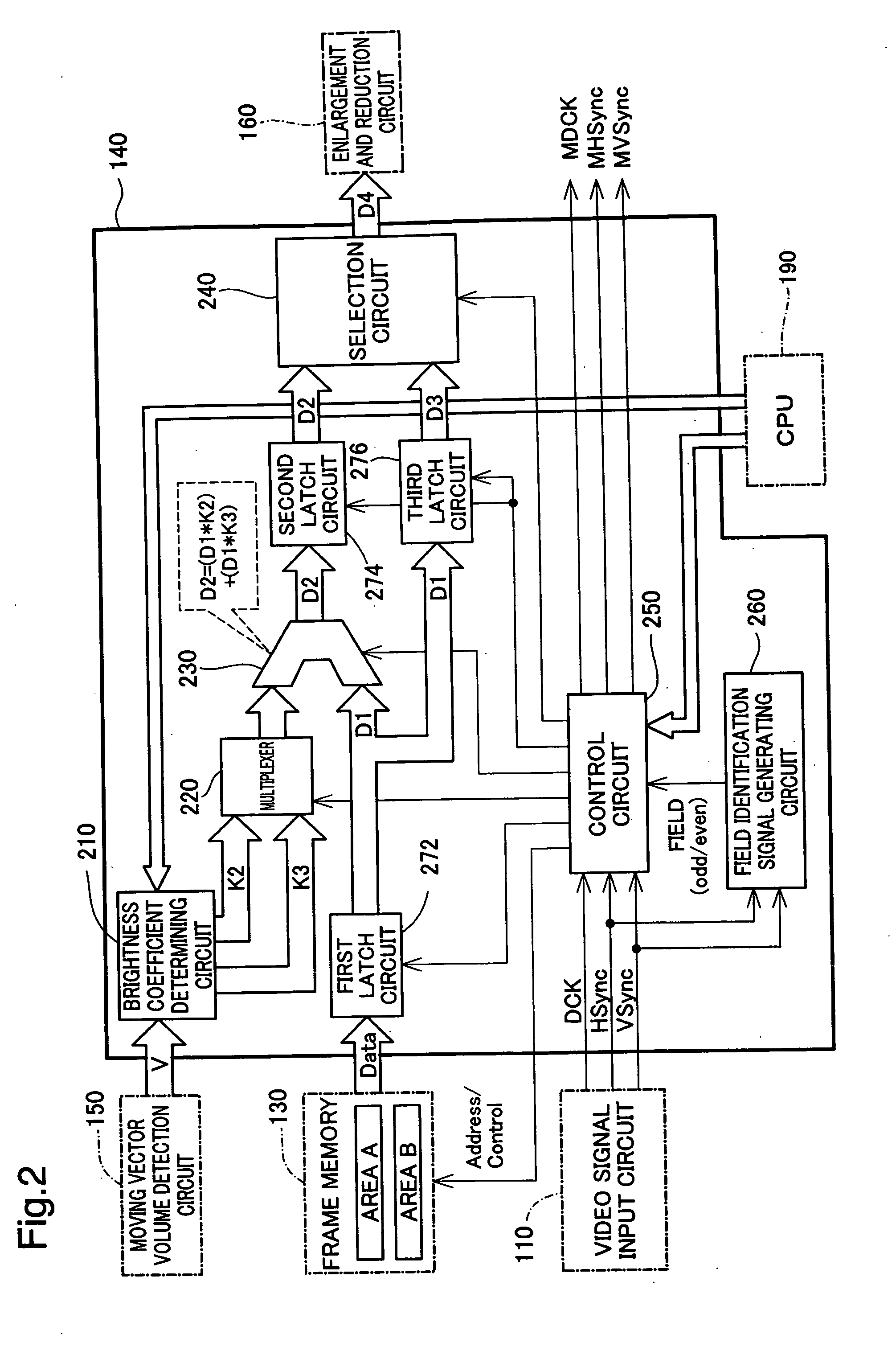Moving image display device and method for moving image display
a technology of moving image and display device, which is applied in the field of moving image display device and moving image display method, can solve the problems of flicker (blinking) occurring on the overall screen, flicker occurring only in the moving object part, and feeling stress while viewing, so as to suppress the flicker of moving image
- Summary
- Abstract
- Description
- Claims
- Application Information
AI Technical Summary
Benefits of technology
Problems solved by technology
Method used
Image
Examples
first embodiment
[0039] A. [0040] (A-1) Projector Hardware Constitution:
[0041]FIG. 1 is a block diagram showing the hardware constitution of the projector 100 as an embodiment of the moving image display device of the present invention. This projector 100 has a function of performing display of moving images by increasing by at least two times the frame rate of the original moving image. A detailed description will be given later regarding the specific constitution for performing display at two or more times the frame rate.
[0042] As shown in the drawing, the projector 100 of the present invention comprises a video signal input circuit 110, a memory write control circuit 120 connected to this video signal input circuit 110, a frame memory 130 connected to the memory write control circuit 120, a moving vector volume detection circuit 150 connected to the frame memory 130, the intermediate frame generating circuit 140 connected to the frame memory 130 and the moving vector volume detection circuit 1...
second embodiment
[0077] B.
[0078] With the first embodiment described above, described was a case when one intermediate frame image was generated and display of the moving image was performed at twice the frame rate of the original video image. In contrast to this, with the second embodiment, described is a case when two intermediate frame images are generated, and the moving image is displayed at a frame rate that is three times that of the original video image.
[0079]FIG. 7 is an explanatory drawing visually expressing the moving image formed on the liquid crystal panel 180 of the second embodiment. As shown in the upper level and middle level of the drawing, with this embodiment, the memory write control circuit 120 writes in sequence to the frame memory 130 the frame image data frame (N−1), frame (N), and frame (N+1), and the control circuit 250 performs five consecutive readings at a doubled cycle of the frame rate of the original video image. At this time, simultaneous reading is performed by a...
PUM
| Property | Measurement | Unit |
|---|---|---|
| brightness | aaaaa | aaaaa |
| brightness coefficient | aaaaa | aaaaa |
| speed | aaaaa | aaaaa |
Abstract
Description
Claims
Application Information
 Login to View More
Login to View More - R&D
- Intellectual Property
- Life Sciences
- Materials
- Tech Scout
- Unparalleled Data Quality
- Higher Quality Content
- 60% Fewer Hallucinations
Browse by: Latest US Patents, China's latest patents, Technical Efficacy Thesaurus, Application Domain, Technology Topic, Popular Technical Reports.
© 2025 PatSnap. All rights reserved.Legal|Privacy policy|Modern Slavery Act Transparency Statement|Sitemap|About US| Contact US: help@patsnap.com



